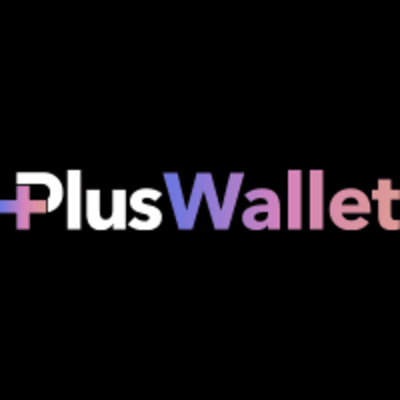Notifications
ALL BUSINESS
COMIDA
DIRECTORIES
ENTERTAINMENT
FINER THINGS
HEALTH
MARKETPLACE
MEMBER's ONLY
MONEY MATTER$
MOTIVATIONAL
NEWS & WEATHER
TECHNOLOGIA
TV NETWORKS
VIDEOS
VOTE USA 2026/2028
INVESTOR RELATIONS
COMING 2026 / 2027
ALL BUSINESS
COMIDA
DIRECTORIES
ENTERTAINMENT
FINER THINGS
HEALTH
MARKETPLACE
MEMBER's ONLY
MONEY MATTER$
MOTIVATIONAL
NEWS & WEATHER
TECHNOLOGIA
TV NETWORKS
VIDEOS
VOTE USA 2026/2028
INVESTOR RELATIONS
COMING 2026 / 2027
 Plus Wallet -
13 hours ago -
Technology -
31 views -
0 Comments -
0 Likes -
0 Reviews
Plus Wallet -
13 hours ago -
Technology -
31 views -
0 Comments -
0 Likes -
0 Reviews

In the rapidly evolving world of digital technology, the way we identify ourselves online is undergoing a seismic shift. Traditionally, online identity has been tied to usernames, email addresses, and, most notoriously, passwords. But as data breaches, phishing attacks, and privacy concerns continue to escalate, the Web3 movement is ushering in a more secure, decentralized solution: Web3 wallets.
In this article, we’ll explore how the Web3 crypto wallet is set to replace passwords and redefine digital identity. We'll also examine how a web3 wallet app is not just a tool for crypto transactions but a passport to the decentralized internet of the future.
Passwords have long been the standard for online authentication. But with the growing number of apps, platforms, and services we use daily, password fatigue is real. Users often resort to reusing weak passwords or storing them insecurely, making them prime targets for cybercriminals.
Key problems with password-based systems include:
Data breaches: Centralized servers storing millions of credentials are frequent targets.
Phishing scams: Users are tricked into giving away login details.
Inconvenience: Forgotten passwords and recovery processes create friction in user experience.
Lack of privacy: Your identity is often tied to personal information (like email or phone number) and stored by third parties.
Web3 offers a fundamentally different model—one where you control your own identity without ever needing a password.
Web3 represents a new era of the internet where decentralization, security, and user ownership are paramount. At the heart of this revolution is the Web3 crypto wallet. These wallets are more than just a place to store digital assets—they’re powerful tools that can serve as digital ID cards.
A Web3 wallet holds a private key, which proves ownership of a blockchain address. This cryptographic key is the foundation of decentralized authentication.
When you use a Web3 wallet app, you can:
Sign in to dApps (decentralized apps) without a password.
Prove your identity using wallet signatures.
Retain full control over your data and online identity.
This method of authentication is known as "Sign-In with Ethereum" or similar protocols like WalletConnect and Web3Auth, which are quickly gaining traction across the decentralized web.
Here’s how a Web3 crypto wallet transforms digital identity:
Instead of typing in a password, a dApp or service sends a message to your wallet. You simply sign it with your private key—this proves that you own the associated wallet address, verifying your identity without revealing any personal data.
Your credentials are not stored on any central server. There’s nothing to hack, leak, or compromise. The authentication happens on-chain or through peer-to-peer protocols, making it inherently more secure.
Your Web3 wallet app can be used to log in to various platforms, dApps, and even Web2 services adopting decentralized login solutions. No more juggling usernames and passwords for every website.
A Web3 wallet doesn't require your email, phone number, or name. You can prove ownership and access without revealing who you are—unless you choose to.
The future of passwordless identity via Web3 wallet apps is already unfolding:
Decentralized Social Media: Platforms like Lens Protocol or Farcaster allow users to create and manage profiles using their Web3 wallets, with ownership of data resting in users' hands.
Decentralized Finance (DeFi): Services like Uniswap, Aave, and Compound rely on wallet signatures for secure access—no password required.
NFT Marketplaces: Logging in to OpenSea or Rarible with your Web3 wallet is faster and safer than creating an account with traditional credentials.
Gaming & Metaverses: Play-to-earn games and virtual worlds like Decentraland or The Sandbox use Web3 wallets for access, asset management, and identity.
While Web3 wallet apps offer immense promise, there are challenges:
User education: New users must understand how private keys and seed phrases work. Losing your private key means losing access.
UX improvement: Wallets are becoming more intuitive, but the onboarding process still needs streamlining for mass adoption.
Biometric integration: Many wallets are integrating face ID, fingerprint recognition, or hardware-based authentication to combine ease-of-use with robust security.
Despite these hurdles, the advantages of passwordless, wallet-based identity are undeniable—and the infrastructure is improving rapidly.
As more Web2 platforms explore decentralized alternatives, Web3 crypto wallets will play a central role in redefining digital identity. Giants like Google and Apple have already begun exploring passwordless authentication, but their solutions are still tied to centralized ecosystems. Web3 offers a true alternative—identity ownership without reliance on big tech.
In the future, your Web3 wallet app could become your all-in-one identity manager: logging you into services, managing subscriptions, authenticating your online presence, and even issuing verifiable credentials like digital diplomas or certificates.
The transition from password-based systems to decentralized identity is already underway, and Web3 wallet apps are leading the charge. By leveraging blockchain’s security and decentralization, these wallets eliminate the need for passwords and put users back in control of their online identity.
If you care about privacy, security, and convenience in the digital age, adopting a Web3 crypto wallet might just be the smartest move you can make. The future of login is not just passwordless—it’s trustless, decentralized, and built on Web3.
